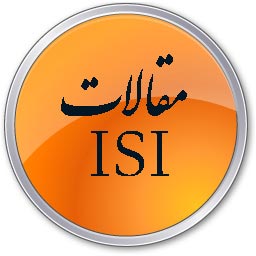کنترل بهینه سازی شده ی تولید بادی مبتنی بر- DFIG با استفاده از آنالیز حساسیت و بهینه سازی ازدحام ذرات
| دسته بندی | مقالات ترجمه شده isi |
| بازدید ها | 8 |
| فرمت فایل | doc |
| حجم فایل | 5727 کیلو بایت |
| تعداد صفحات فایل | 24 |


Optimized Control of DFIG-Based Wind Generation Using Sensitivity Analysis and Particle Swarm Optimization
Abstract—Optimal control of large-scale wind farm has become
a critical issue for the development of renewable energy systems
and their integration into the power grid to provide reliable,
secure, and efficient electricity. Among many enabling technologies,
the latest research results from both the power and energy
community and computational intelligence (CI) community have
demonstrated that CI research could provide key technical innovations
into this challenging problem. In this paper, we propose
a sensitivity analysis approach based on both trajectory and
frequency domain information integrated with evolutionary algorithm
to achieve the optimal control of doubly-fed induction
generators (DFIG) based wind generation. Instead of optimizing
all the control parameters, our key idea is to use the sensitivity
analysis to first identify the critical parameters, the unified dominate
control parameters (UDCP), to reduce the optimization
complexity. Based on such selected parameters, we then use
particle swarm optimization (PSO) to find the optimal values to
achieve the control objective. Simulation analysis and comparative
studies demonstrate the effectiveness of our approach..
کنترل بهینه سازی شده ی تولید بادی مبتنی بر- DFIG با استفاده از آنالیز حساسیت و بهینه سازی ازدحام ذرات
چکیده
کنترل بهینهی مزرعه بادی در مقیاس بزرگ مسالهای حیاتی برای ایجاد سیستمهای انرژی تجدیدپذیر و ادغام آنها به شبکهی برق به منظور تامین برق مطمئن، ایمن، و کارآمد شده است. در میان بسیاری از فنآوریهای با قابلیت، آخرین نتایج تحقیقات از هر دو جامعهی قدرت و انرژی و جامعهی هوش محاسباتی (CI) نشان دادهاند که پژوهش CI نوآوریهای کلیدی فنی برای به چالش کشیدن این مسئله را ارائه میکند. در این مقاله، روش آنالیز حساسیت بر اساس منحنی مسیر و اطلاعات حوزهی فرکانسی یکپارچه شده با الگوریتم تکاملی به منظور دستیابی به کنترل بهینهی تولید بادی مبتنی بر ژنراتورهای القائی تغذیهی دوسویه (DFIG) ارائه شده است. به جای بهینهسازی تمام پارامترهای کنترلی، ایدهی اصلی ما اولا استفاده از آنالیز حساسیت به منظور شناسایی پارامترهای بحرانی، پارامترهای کنترلی غالب یکپارچه (UDCP) به منظور کاهش پیچیدگی بهینهسازی است. از اینرو براساس این پارامترهای انتخاب شده، از بهینهسازی اجتماع ذرات (PSO) به منظور یافتن مقادیر بهینه برای دستیابی به هدف کنترلی استفاده میکنیم. آنالیز شبیهسازی و مطالعات تطبیقی کارایی روش ما را نشان میدهد.
کنترل STATCOM مبتنی بر VSC با استفاده از راهبرد های متداول و کنترل بردار جریان مستقیم
| دسته بندی | مقالات ترجمه شده isi |
| بازدید ها | 11 |
| فرمت فایل | doc |
| حجم فایل | 1056 کیلو بایت |
| تعداد صفحات فایل | 13 |


Control of VSC-based STATCOM using conventional and direct-current vector control strategies
a b s t r a c t
A STATCOM is a device that can compensate reactive power and provide voltage support to an ac system.
Due to the advance of power electronic technology, VSC-based IGBT or IGCT converters have been
increasingly used in modern STATCOM systems. A traditional VSC-based STATCOM consists of a voltage
source converter, connected to an energy storage device on one side and to the ac power system on the
other, and a control system based on the conventional standard d–q vector control technology. This paper
studies and compares the conventional and a direct-current vector control schemes for a VSC-based
STATCOM. A limitation of the conventional control mechanism is analyzed. An optimal control strategy
is developed based on a direct-current vector control design. Close-loop control evaluation demonstrates
that a D-STATCOM system works well using the proposed control mechanism both within and beyond
the converter linear modulation limit while the conventional standard control technique could result
in over voltage and system oscillations when the converter operates beyond its linear modulation limit.
کنترل STATCOM مبتنی بر VSC با استفاده از راهبردهای متداول و کنترل بردار جریان مستقیم
چکیده
STATCOM دستگاهی است که میتواند توان راکتیو را جبرانسازی کند و پشتیبانی ولتاژ را برای یک سیستم ac ارائه کند. با توجه به پیشرفت فنآوری الکترونیک قدرت، مبدلهای IGCT یا IGBT مبتنی بر VSC بطور قابل توجهی در سیستمهای STATCOM مدرن استفاده میشوند. STATCOM مبتنی بر VSC متعارف شامل مبدل منبع ولتاژ (که به دستگاه ذخیرهسازی انرژی در یک سو و سیستم قدرت ac در سوی دیگر متصل است) و سیستم کنترل مبتنی بر فنآوری کنترل بردار d-q استاندارد معمولی است. این مقاله طرحهای کنترل بردار جریان مستقیم و متعارف برای STATCOM مبتنی بر VSC را مطالعه و مقایسه میکند. محدودیت ساز و کار کنترل متعارف آنالیز میشود. یک استراتژی کنترل بهینه بر اساس طرح کنترل بردار جریان مستقیم ایجاد میشود. ارزیابی کنترل حلقه-بسته نشان میدهد که سیستم D-STSTCOM با استفاده از ساز و کار کنترلی ارائه شده هم در داخل و هم خارج از حد مدولاسیون خطی مبدل بخوبی کار میکند اما زمانیکه مبدل فراتر از حد مدولاسیون خطی کار میکند روش کنترل استاندارد متعارف باعث اضافه ولتاژ و نوسانات سیستم میشود.

